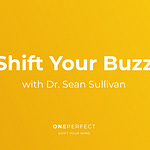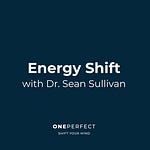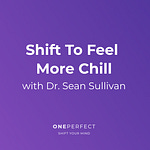Let's take a long, deep breath.
Come fully into this moment.
—
—
—
What do you see in your environment right now that you've never seen quite the same way before?
—
—
—
I see light shining off of a doorknob, projecting its way into a beautiful world.
Put 100% of your attention into whatever you see for the next 10 seconds.
—
—
—
Just notice and feel, with new eyes.
—
—
—
Feel your body come into presence as you merge with life through watching life and listening to life.
—
—
—
Give life all the attention it deserves.
—
—
—
Feel that mini-shift into presence?
Nice start.
Today, I want to talk about attachment.
Over the last decades, “attachment” has come into greater interest in our culture.
Today, people — including therapists — have a much better understanding of different human attachment styles than they did even twenty years ago. This is largely because of the amazing research on the subject of attachment that's been conducted.
I won't go deeply into that research today.
But I will note that research has brought how important attachment relationships are to our mental health, and how connected attachment styles often are to what are traditionally understood as mental health diagnostic categories, to the forefront.
Personality disorders, depression, and anxieties are frequently related to our personal attachment styles and the emotional challenges those styles can lead to.
I would like to offer a way of thinking about the attachment style continuum, for your consideration.
You can think of a continuum from a negative concept of attachment — which we typically think of as a fear-based or need-based attachment — to a love-based concept of attachment.
It is fear that drives the type of attachment that makes you feel that you need to control some thing, some person, or some situation in order to get your attachment need met.
It’s the fear of not having control, of being hurt, and or, of losing love, that is driving the attachment behaviors, at one end of the spectrum.
If you're relating to people from that end of the spectrum, it typically results in all sorts of negative interpersonal consequences in a person's life.
That's one of the things the research has shown us: that there are persistent patterns that occur in the lives of people who have certain kinds of attachment style challenges.
If you're interested in digging in more and you haven't heard of attachment styles, look it up and you'll discover a far deeper background than I'm able to provide today.
In any case, think of that fear-based motivation for love as one end of the spectrum, while the other end of the attachment spectrum is presence love — feeling connected to someone because you know deep in your bones that you are connected to them.
You know that life brought you together and you share that gift through your presence — your time and attention — your love.
Whatever else this life may be, it is a deeply shared experience.
Sharing that experience, sharing a sense of the miracle with someone else — to me that's a beautiful way to describe pure love.
Sharing without need.
Giving fearlessly.
Trusting fearlessly.
And feeling love reciprocated.
One of the most beautiful such love experiences is the expression of unconditional love of a parent for a child— that kind of love that we often think of as creating the conditions for “good enough” parenting in attachment theory.
Now, that doesn't mean that unconditional love doesn't turn into attachment problems or manipulations born of fear of losing that relationship, or of it changing.
We know it does — parent and child relationships are fraught with challenges.
It's a very complicated relationship, because (among other challenges) as both parent and child, you have to navigate through the period of complete need of the parent and grow into someone capable of producing and giving that complete love or experience to another.
That personal journey is one way to think about how we develop in our emotional lives, throughout our lives.
In your relationships, are you loving out of fear, or the love of presence?
—
—
—
Let’s close our eyes and come further into the present moment as we notice how it feels when you think about that continuum, that spectrum of attachment.
—
—
—
Ask yourself - do I love out of fear, or does love pour out of me out of presence — fearless love?
Maybe you sense a range like most people?
Maybe you’re different with different people?
—
—
—
Bring all of your attention into the present moment now, just listening again.
Listen with 100% of your attention.
–
–
–
Come further into silence now.
—
—
—
Quiet down.
—
—
—
Feel your body buzzing.
—
—
—
Deep breaths.
—
—
—
Relax your shoulders.
Relax your neck.
—
—
—
Good.
Think of a specific loved one now. And ask yourself, how does your love for that person feel?
—
—
—
Are there elements of fear in it, or is it all respect, beauty, and shared miracle?
Those are two extremes. How does your attachment feel?
—
—
—
Just feeling for that can help orient you to the way that you’d prefer to love – the way that you want to love in the world.
—
—
—
Nice.
I hope that little exercise had a positive effect for you.
Let’s take one more deep breath as we set an intention to stay present for the rest of the day.
—
—
—
Feel that intention anchor within you.
—
—
—
Perfect.
Have a great one.
I’ll talk to you soon.
Stay present,
Sean
Get a Shift team trial or personalize an app Shift on iPhone or Android anytime.












